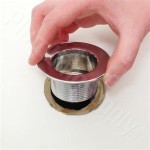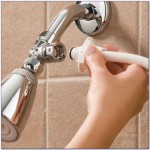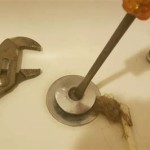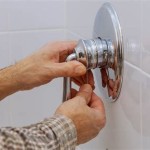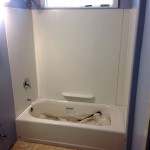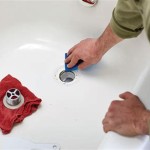Tiling a Bathtub Wall: A Comprehensive Guide
Tiling a bathtub wall is a common home improvement project that can dramatically enhance the aesthetic appeal and functionality of a bathroom. Proper tiling not only provides a visually pleasing surface but also protects the wall from water damage, preventing mold growth and structural issues. This article provides a thorough overview of the process, encompassing preparation, tile selection, installation, and finishing touches.
Preparation is Paramount
Successful tile installation relies heavily on thorough preparation. Neglecting this crucial stage can lead to a host of problems, including uneven surfaces, poor adhesion, and premature tile failure. The initial step involves a careful assessment of the existing wall.
Begin by removing any existing tile, wallpaper, or paint. Employ a scraper, chisel, or specialized tile removal tool to carefully detach the old materials. Exercise caution to avoid damaging the underlying wall structure. Once the surface is clear, thoroughly clean the wall to remove any residual adhesive, dust, or debris. A solution of warm water and mild detergent is typically sufficient for this purpose.
Inspect the wall for any signs of damage, such as cracks, holes, or water stains. Repair any imperfections using appropriate patching compounds or cement backer board, depending on the extent of the damage. Minor cracks can be filled with patching compound, while larger areas may require the installation of new cement backer board. Ensure the patched areas are level and smooth before proceeding.
The next critical step is ensuring a waterproof barrier. This is typically achieved through the application of a waterproof membrane, such as a liquid membrane or a waterproof tape. These membranes create a continuous, impermeable layer that prevents water from penetrating the wall and causing damage. Follow the manufacturer's instructions carefully when applying the membrane, paying particular attention to seams and corners.
Finally, create a level starting point. This is often achieved by installing a ledger board – a straight piece of wood – along the bottom of the wall or along the top edge of the bathtub. This board will serve as a guide for the first row of tiles, ensuring they are perfectly level. Use a level to ensure the ledger board is properly positioned before securing it to the wall.
Tile Selection and Layout Planning
Choosing the right tile is a significant aspect of the tiling process, influencing both the aesthetic and functional aspects of the finished product. Consider factors such as tile material, size, color, and finish.
Tile material options include ceramic, porcelain, glass, and natural stone. Ceramic tiles are a popular choice due to their affordability, durability, and ease of maintenance. Porcelain tiles are denser and less porous than ceramic tiles, making them more resistant to water damage. Glass tiles offer a unique aesthetic appeal and are ideal for creating accents or decorative borders. Natural stone tiles, such as marble or slate, provide a luxurious and elegant look, but they require more specialized care and maintenance.
Tile size also plays a role in the overall appearance of the bathroom. Larger tiles can create a more modern and spacious feel, while smaller tiles can add texture and visual interest. Consider the size of the bathroom when selecting tile size; larger tiles may be overwhelming in a small space.
Carefully plan the tile layout before beginning the installation process. This involves determining the starting point, the placement of full tiles, and the location of any cut tiles. A common approach is to start with a full tile in the most visible corner of the wall and work outward. This minimizes the visibility of cut tiles and creates a more aesthetically pleasing appearance.
Use a tile spacer to maintain consistent grout lines between tiles. These spacers are available in various sizes, allowing for different grout line widths. Experiment with different layouts and grout line widths until you find a design that suits your preferences. Photographing your layout plan might assist in later stages.
Dry-fitting the tiles is an essential step in the layout planning process. This involves placing the tiles on the wall without adhesive to visualize the final result. This allows you to make any necessary adjustments to the layout before committing to the installation. Use a tile cutter or wet saw to cut tiles to the appropriate size and shape. Practice cutting on scrap tiles to develop your technique.
The Installation Process
With the preparation complete and the layout planned, you can begin the tile installation process. This involves applying adhesive to the wall, placing the tiles, and ensuring they are properly aligned and level.
Start by mixing the tile adhesive according to the manufacturer's instructions. Use a notched trowel to apply a thin, even layer of adhesive to the wall. The size of the notch on the trowel will determine the thickness of the adhesive layer. Apply the adhesive in small sections to prevent it from drying out before you can place the tiles.
Press the tiles firmly into the adhesive, using a slight twisting motion to ensure good contact. Use tile spacers to maintain consistent grout lines between tiles. Periodically check the tiles with a level to ensure they are properly aligned. If a tile is not level, gently tap it into place with a rubber mallet.
Work in sections, applying adhesive and placing tiles until the entire wall is covered. Allow the adhesive to dry completely according to the manufacturer's instructions. This typically takes 24 to 48 hours.
Once the adhesive is dry, remove the tile spacers and prepare to grout the tiles. Mix the grout according to the manufacturer's instructions. Use a grout float to apply the grout to the tile joints, pressing it firmly into the spaces between the tiles. Work in small sections, removing excess grout with a damp sponge as you go.
Allow the grout to dry slightly, then use a clean, damp sponge to wipe away any remaining grout residue from the tile surface. Be careful not to remove too much grout from the joints. Allow the grout to cure completely according to the manufacturer's instructions. This typically takes several days.
Finally, apply a grout sealer to protect the grout from staining and water damage. Follow the manufacturer's instructions carefully. A grout sealer is essential for maintaining the appearance and integrity of the grout over time.
Inspect the completed tile installation for any imperfections. Fill any small gaps or cracks with caulking, and clean the tiles thoroughly to remove any remaining residue. Consider adding a decorative trim or border to enhance the overall appearance of the tiled wall.
Regular cleaning and maintenance will help to keep the tiled wall looking its best for years to come. Clean the tiles regularly with a mild detergent and water. Avoid using abrasive cleaners, as they can damage the tile surface. Inspect the grout periodically for any signs of damage or deterioration, and reapply grout sealer as needed.
Ensuring adequate ventilation in the bathroom is also crucial for preventing moisture buildup and mold growth. Install a bathroom exhaust fan and use it regularly during and after showers or baths. This will help to keep the bathroom dry and prevent water damage to the tiled wall and surrounding areas.

A Diyer S Guide To Waterproofing And Tiling Tub Surround Ugly Duckling House

The Complete Guide To Installing Tile On Shower Or Bathtub Walls

How To Tile A Bathroom Wall Granada Cement Blog Ideas Tips And More

40 Unique Bathtub Tile Surround Ideas To Revamp Your Space

Diy Tips For Tiling A Tub Surround Twofeetfirst

Bathroom Tub Surround Tile Subway More The

Half Tiled Tub Surround Design Ideas

How To Tile Bathroom Shower Tub Surround And Niche A Z

Half Tiled Tub Surround Design Ideas
.jpg?strip=all)
Installing The Ceramic Tile Tub Surround My Old House Ibuildit Ca
Related Posts

